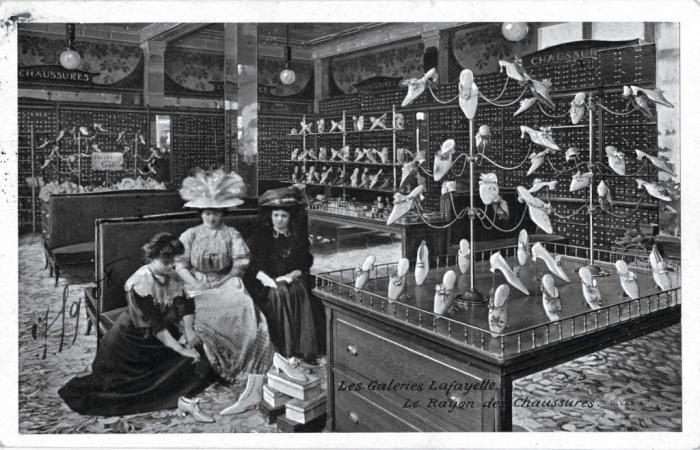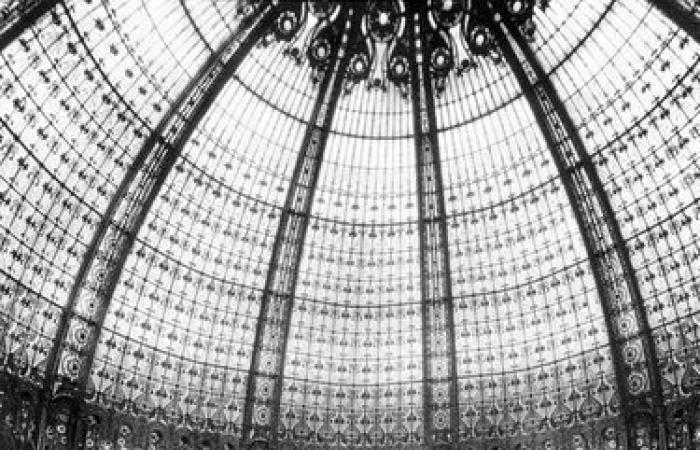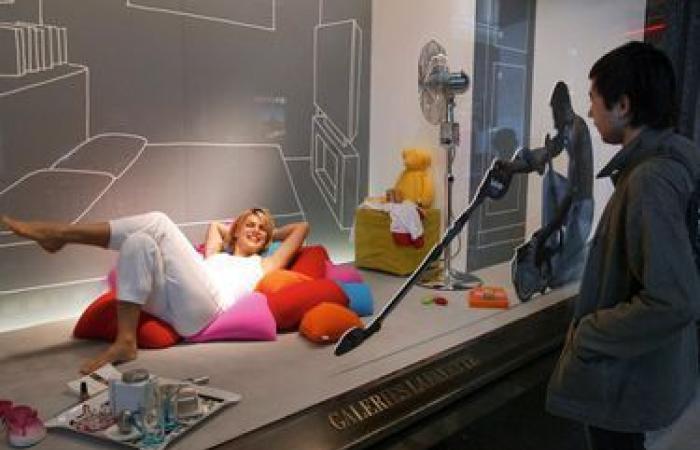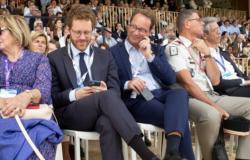Their fame equals that of the most famous monuments of the capital, of which they remain, with 37 million visitors per year, one of the symbols. As they celebrate their 130th anniversary this month, Galeries Lafayette has lost none of the modern and avant-garde side that helped build their reputation since the end of the 19th century.
For visitors, French or foreign, in Paris, there is the Eiffel Tower, of course, the Louvre, the Sacré-Coeur and… the Galeries Lafayette. This temple of consumption with international notoriety remains a must for those who want to grab it on the fly and try to take away a bit of that famous “Parisian chic”. For one hundred and thirty years, its dome, which rises to a height of 43 meters, has seen elegant ladies of all kinds pass by, upper middle class ladies, courtesans, ladies of the world… But not only that. The workers also enjoyed strolling through these aisles where we found, in particular, haberdashery items at all prices and where we could search, touch, compare and test the products. Its owner and co-founder Théophile Bader had the motto: “Make beauty and goodness accessible. » Bet won.
The rest after this ad
Originally from Dambach-la-Ville, in Alsace, he joined forces with his cousin Alphonse Kahn, also from Alsace and already at the head of a small textile manufacturing company in Paris. Together, they opened this first bazaar-style store on January 15, 1894. Located at 1, rue La Fayette, on the corner with rue de la Chaussée-d’Antin, it was only 70 square meters but its success is immediate. Three years later, the two cousins ended up buying the entire building before investing, in 1903, in the neighboring buildings at 38, 40 and 42, boulevard Haussmann, as well as numbers 15, then 23 on rue de la Chaussée-d’Antin. Very close to the Opéra Garnier, built in 1861, and the Saint-Lazare train station. The models offered, which imitate those of renowned couturiers of the time, are designed and assembled in their own workshops, belonging to the Galeries Lafayette limited company created in 1901.
Alphonse Kahn (right) and Théophile Bader, cousins from Alsace, joined forces in 1893 to open the first store a year later.
© Galeries Lafayette
Workers and middle-class women enjoy strolling through these aisles where you can browse, touch and compare products.
Pioneers on the social level, Théophile Bader and Alphonse Kahn set up for their employees a relief fund, a retirement fund, as well as a nursery, a rarity at the time. The store expanded under the leadership of architects Georges Chedanne and Ferdinand Chanut. In 1912, the latter developed what would become the symbol of this unique department store in the world: a Byzantine-style dome 33 meters in diameter, made up of thousands of stained glass windows signed by master glassmaker Jacques Gruber, a figure of Art Nouveau. The main staircase, which leads to five floors, and the balconies are decorated with floral motifs designed by the cabinetmaker and decorator Louis Majorelle. The same year, Alphonse Kahn sold his shares to his cousin. New departments appear, as well as a tea room, a smoking room…
The monumental staircase, built in 1912, is inspired by that of the Paris Opera.
© Galeries Lafayette
In these galleries, people come to buy, of course, but also to see and be seen, to stroll, to have a good time, to discover the latest curiosities. And sometimes witness extraordinary events, like on January 19, 1919, when the aviator Jules Védrines, at the controls of his Caudron G3, landed on the roof of the department store… A feat, when we know that the ” track” is only 28 meters long and 12 meters wide. This commercial event, paid 25,000 francs at the time, will create a precedent. In 1981, tennis player Björn Borg played a match against around sixty children on the roof of the building, whose Art Deco facade, created by Pierre Patout in the 1930s, is classified as a historic monument.
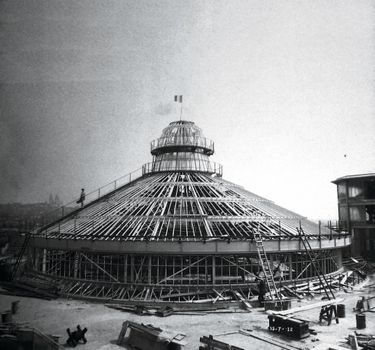
The dome during its construction in 1912. The emblem of the department store, renovated in 2021, is the result of the collaboration between the geniuses of Art Nouveau Ferdinand Chanut, Jacques Grüber and Louis Majorelle.
© Galeries Lafayette
Galleries like to highlight artists, commission works and installations from them
The Galleries like to highlight artists, commissioning works and installations from them, as was the case with the photographer David LaChapelle, but also the filmmaker David Lynch, the dancer and choreographer Marie-Claude Pietragalla and the visual artist Yann Kersalé. Jean-Paul Goude’s giant advertising posters featuring Laetitia Casta and Naomi Campbell made an impression.
The rest after this ad
A family business, taken over by Raoul Meyer and Max Heilbronn, the sons-in-law of Théophile Bader, in 1935, Galeries Lafayette has spread throughout France, but also across the planet: in Berlin, Dubai, Jakarta and Shanghai. In 2010, they even entered the “Guinness Book of Records” after organizing the largest fashion show in the world, which allowed more than 700 people to walk the podium… Faithful to the slogan advocated by their founder who wanted to make it “the department store for everyone”.
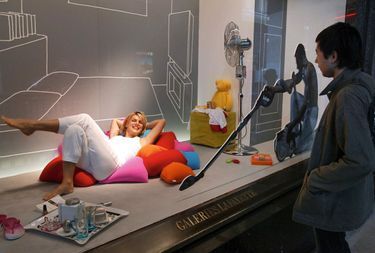
In 2004, the department store participated in a campaign aimed at promoting a better distribution of household tasks between men and women.
AFP / © Daniel FETUS

